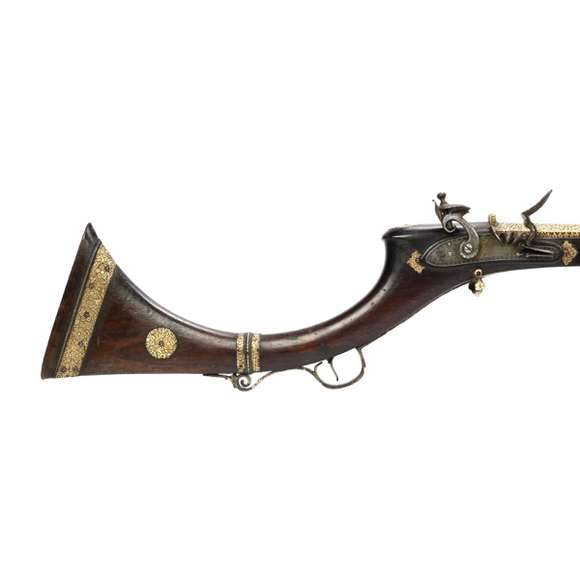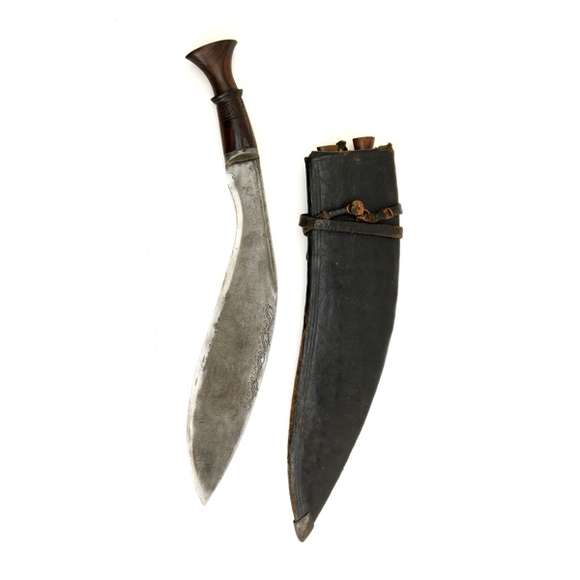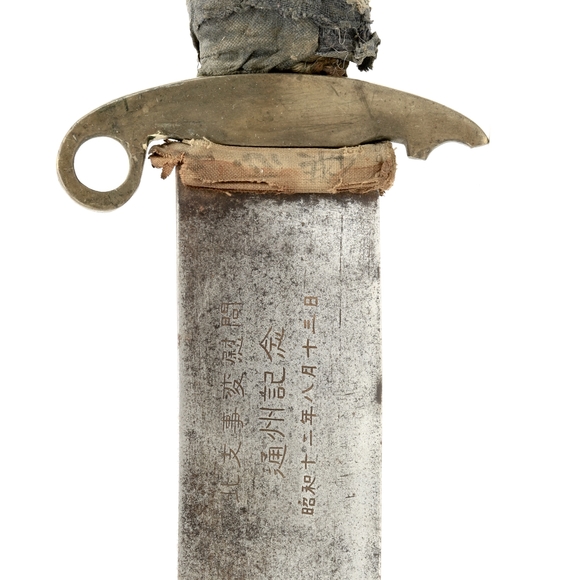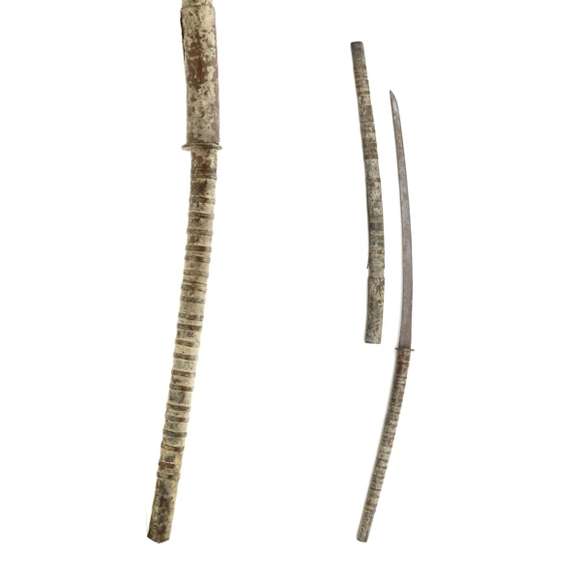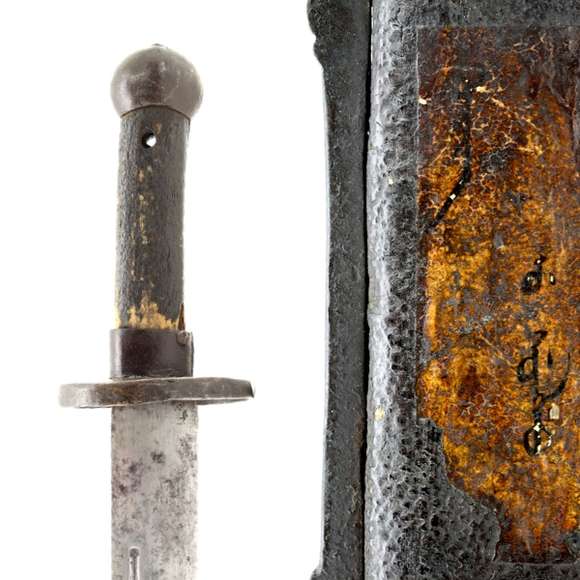A large gun with English flintlock mechanism, as favored by the Mirs of the Talpur court. In very good…
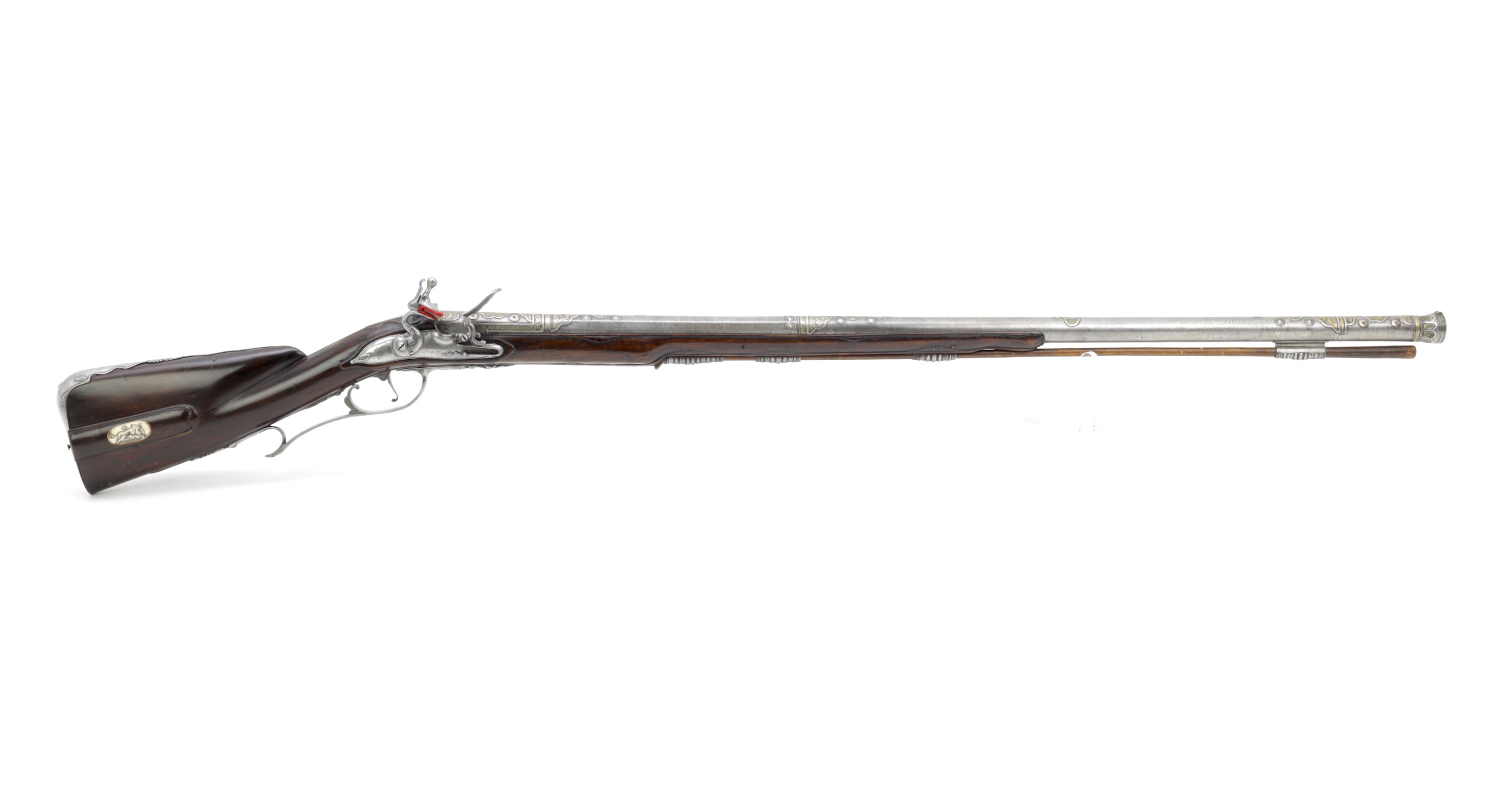
146 cm
107.6 cm
19 mm
5983 grams
Iron, steel, yellow metal, silver, coral, wood, bone
Barrel: Ottoman empire
Lock & stock: Munster, Germany
Barrel 17th century
Lock & stock late 17th century
Dutch antiques market
Introduction
By the 16th century, the Ottoman Empire became a serious threat to European powers. Ottoman ships attacked Venetian traders and Ottoman-backed Barbary pirates seized merchant ships and abducted Europeans for the slave trade. The Ottoman foothold got stronger after a decisive victory at Mohács which made part of Hungary an Ottoman tributary.
In 1683 the Ottomans pushed on and besieged the city of Vienna with an army of about 150.000 strong, culminating in the Battle of Vienna of 12 September that year. It was a decisive victory for the Holy League, and the worst defeat suffered by the Ottomans thus far.

The Ottomans before the walls of Vienna, by August Querfurt.
Sotheby's New York, 6 June 2012, N08869, lot 46.
Wikimedia.
Türkenbeute
The spoils of the war were collected by the victors. Those captured by the Habsburgs were often presented in special rooms as Türkenbeute "or Turkish loot". Two of the most famous hauls are now in the Turkish Chamber of Staatlichen Kunstsammlungen Dresden, and the "Karlsruhe Türkenbeute," currently held in the Landesmuseum in Karlsruhe.
The latter was collected by members of the House of Baden-Baden, most notably Louis William, Margrave of Baden-Baden, also known as Türkenlouis ("Turkish Louis") for his many victories against Ottoman forces during the Battle of Vienna and its aftermath.
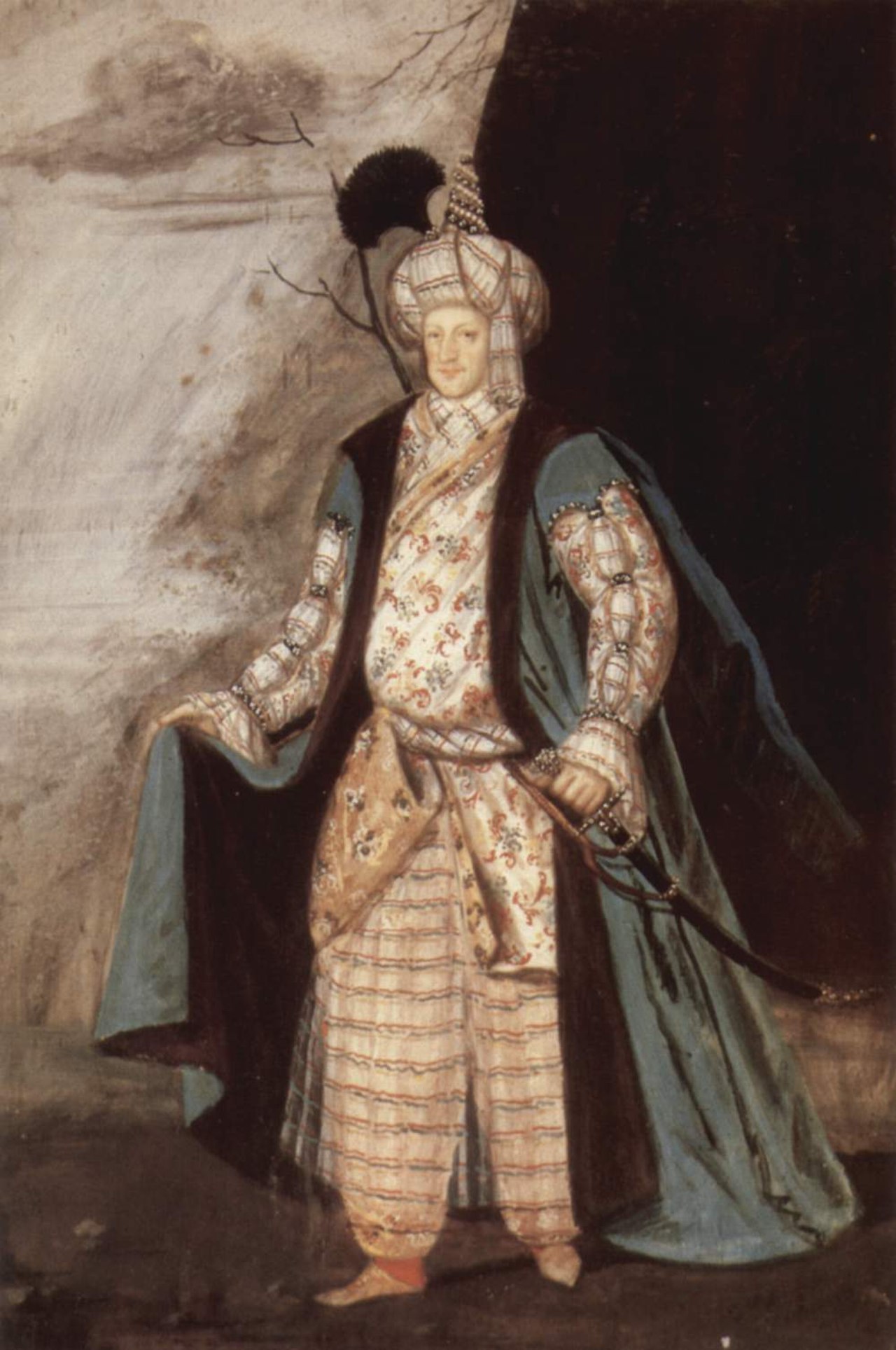
Ludwig Wilhelm von Baden-Baden, a.k.a. Türkenlouis.
Dressed as an Ottoman officer, using the spoils of the siege.
Unknown painter. Wikipedia.
German flintlocks with Türkenbeute barrels
While most of the spoils of the Turkish Wars were kept in special cabinets and mainly appreciated as curiosities, many of the barrels saw new use. In the 16th century, European observers noticed the range and force of Ottoman rifles were superior to those made in Europe. This was ascribed to the twisted construction of the barrels, which made them less likely to delaminate under pressure, effectively enabling them to use higher charges.1
Ottoman muskets were also held in high esteem in Safavid Persia, Mughal India, and Ming China, where a treatise in the late 1590s considered Ottoman handguns better than Portuguese muskets.2
Word spread quickly, and Ottoman barrels became highly sought-after in Europe, to be mounted in European fashion and with the latest European locks, which were generally better than the miquelets used by the Ottomans. Following the Battle of Vienna, many fine Ottoman barrels taken from that battle made it to German hunting guns of the highest quality, to be used by local noblemen.3
Notes to introduction
1. Robert Elgood, Firearms of the Islamic world, page 38 and The Arms of Greece pages 78, 80 and 81.
2. Gábor Ágoston, Firearms and Military Adaptation: The Ottomans and the European Military Revolution, 1450-1800. Journal of World History, Volume 25, Number 1. March 2014. University of Hawai'i Press. Page 106.
3. Die Karlsruher Türkenbeute. Badischer Landenmuseum. Hirmer Verlag München. 1991. Pages 269-270.
This example
A fine German hunting gun from the late 17th century.
Barrel
It is built around a good example of a large and heavy Ottoman twist-forged barrel, retaining its original finish where darker grey contrasts with bright steel in the twist welds. The barrel is four-staged with a rounded breech, then a faceted section, and then a long section with typical drop-shape cross-section with a ridgeline on top. The muzzle end goes from ten facets to round at the very end. It retains its original arched sight as well. Barrel decor consists of silver and yellow metal appliques and pieces of corals.

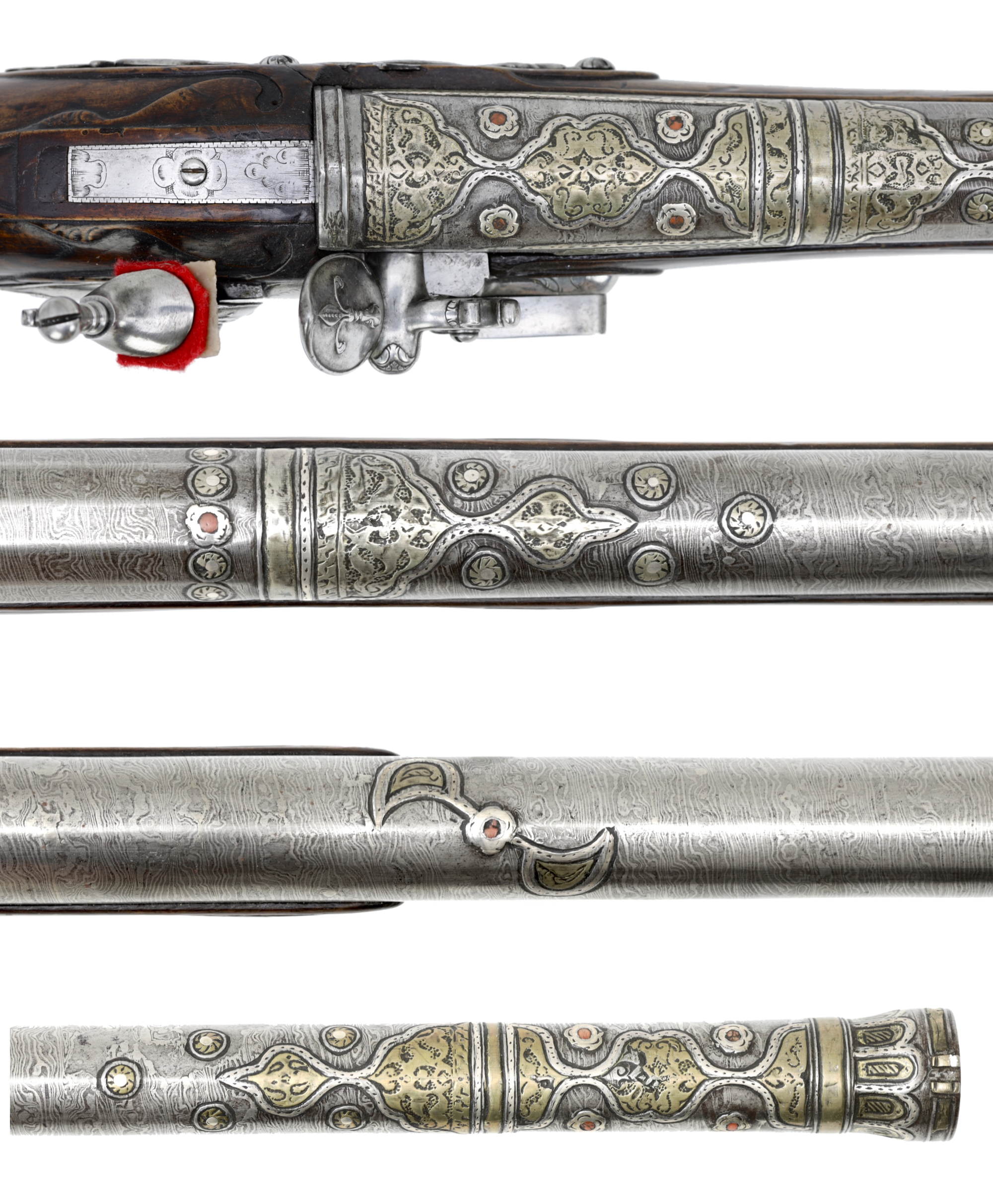
Lock & stock
The rest of the gun is German, probably made in the last decade of the 17th century. The lockplate is signed:
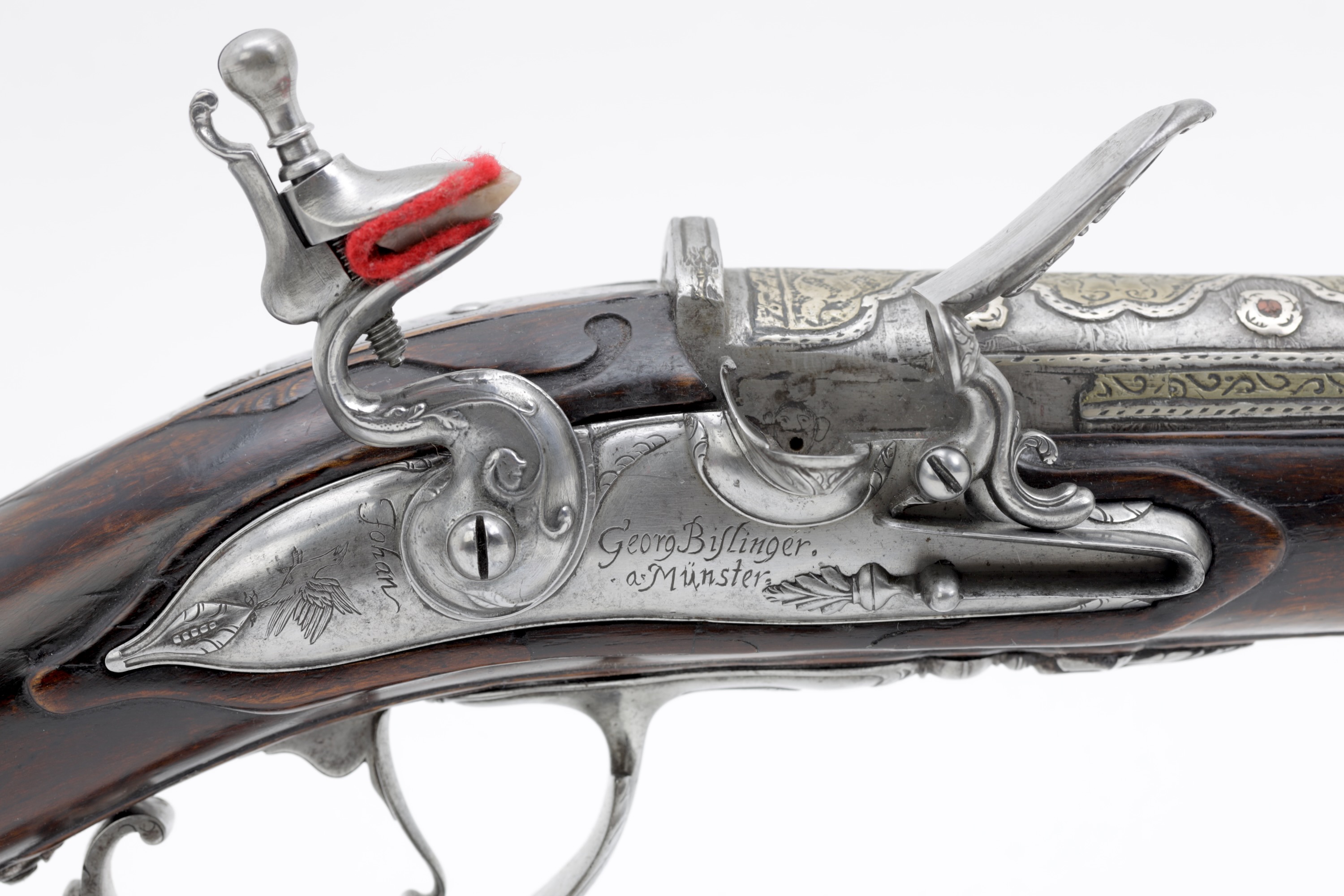
"Johan
Georg Bislinger.
'a' Münster"
There are no known gunmakers named Bislinger in the standard literature, but two Bieslingers could be found working in Vienna in the late 17th century. Perhaps our Johan Georg is related to them.
There is one gun signed "Johan Jorg Bislinger" of Munster illustrated at Alamy, dated 1694, that shows quite some similarities with ours.
The work is of good quality and with lots of attention to detail. Even the inside of the lock is beautifully worked:
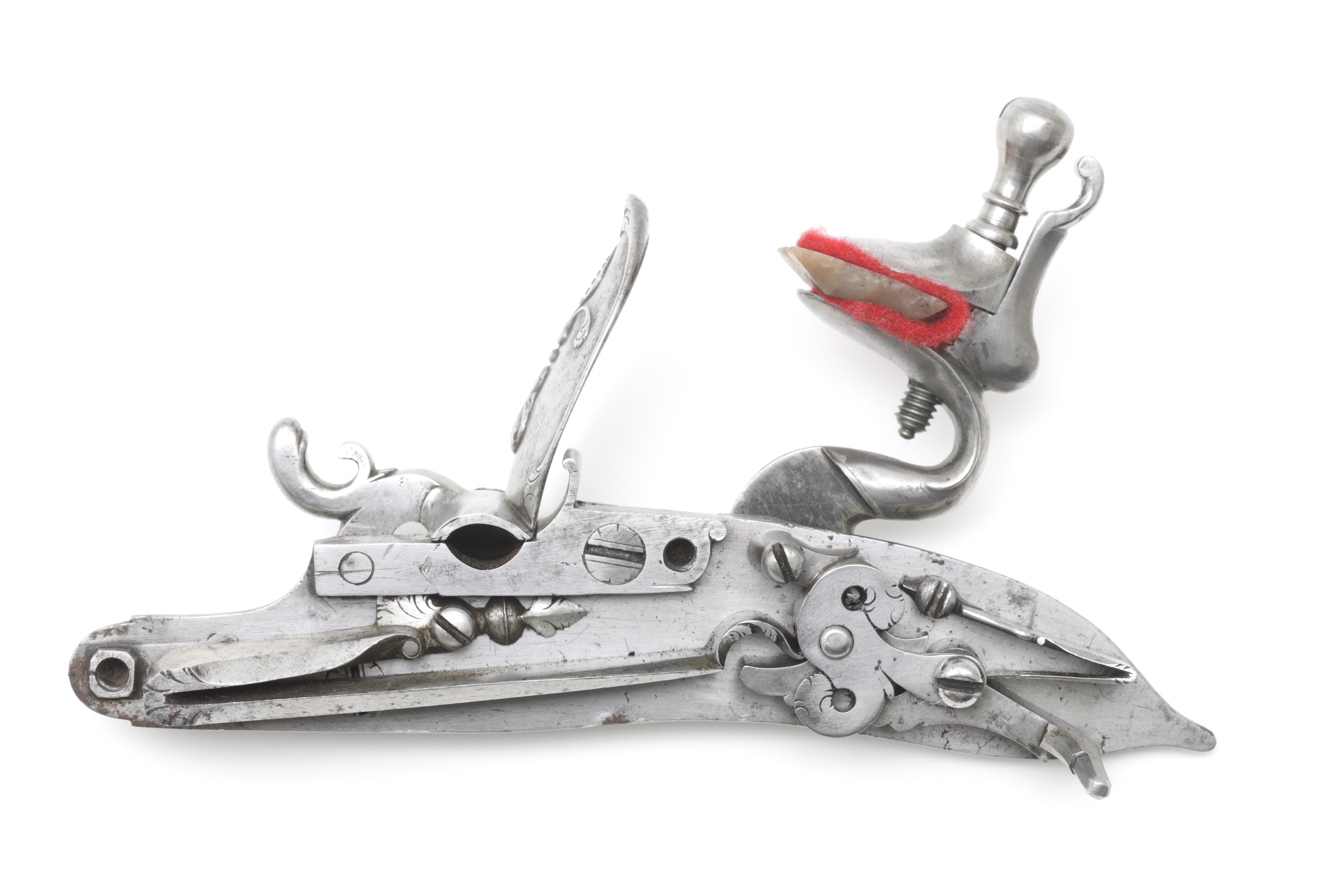
The stock is made of dark wood, with decorative bone plates on both sides. The left plate is engraved with a stag, the one on the right on the cover of a compartment in the stock depicts a hunting dog with a bird.
The metalwork has many features, including fine engravings and returning themes of early Germanic snake-like dragons called wyrm.
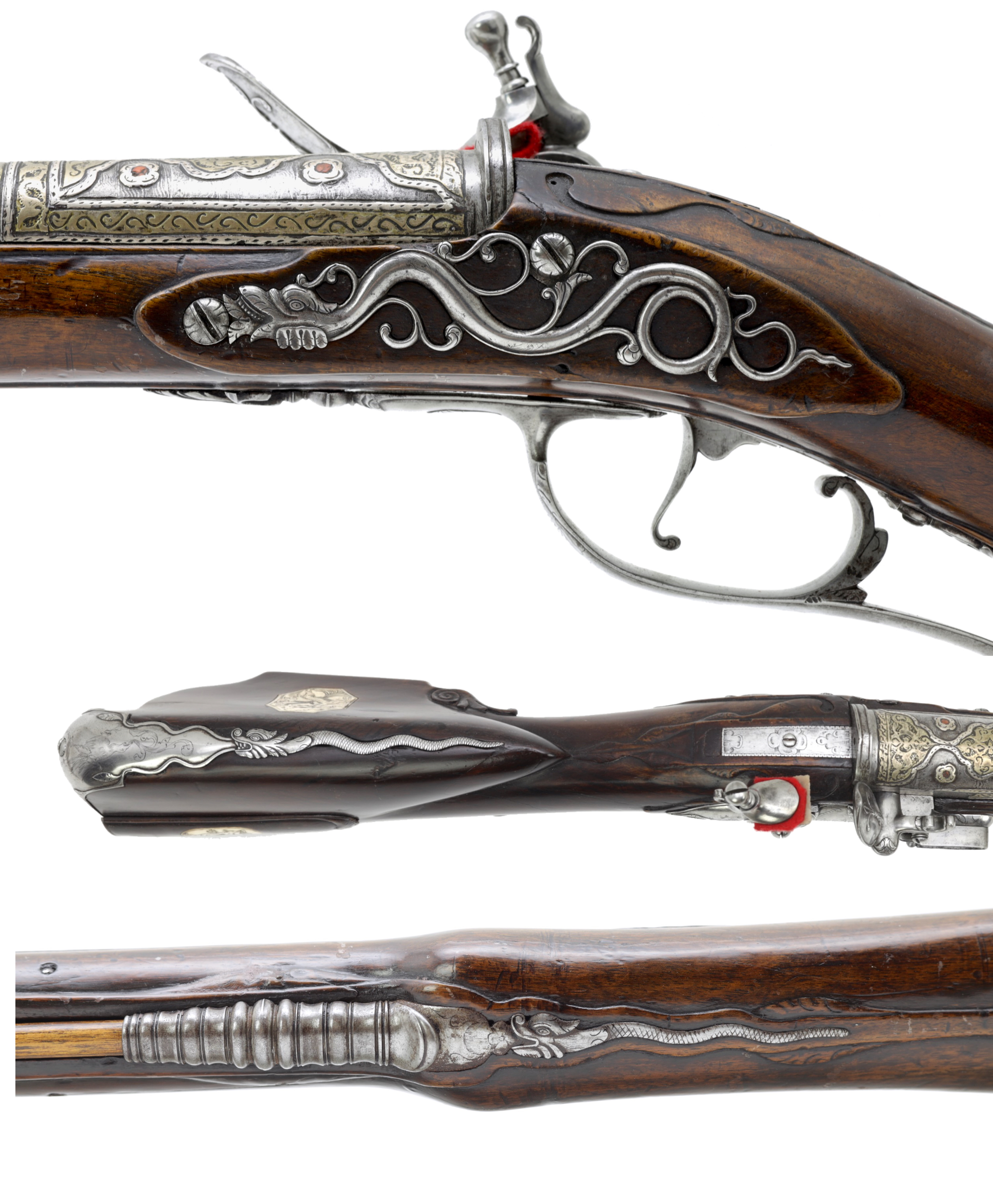
A whimsical detail is a face with open mouth around the touchhole.

Condition
Barrel steel in great condition with no pitting or corrosion or traces of it. Some corals and elements of the metal appliques missing. Some age-related damage to stock, and some minor damages to an old varnish. A small repair to the wood behind the breech. Otherwise in excellent condition. Ramrod may be later.
Comparable examples
The Museum of Ethnology Dresden in Dresden has several similar German flintlock guns with captured Ottoman barrels. Among which:
1. G 2042
Barrel by Abd al-Muhammad. Lock by Georg Flemich.
The barrel is thought to have come from the Battle of Olasch of August 1696 on the border of Romania and Serbia.
From the estate of Duke Johann Adolph II of Sachsen-Weißenfels. from Poland. In 1743, it came into the possession of King Friedrich August III.
2. G 1160
Barrel maker unknown. Lock and stock by Andreas Erttel (active around 1679-1725), Dresden.
The barrel is thought to have come from the Battle of Olasch.
A gift from General von Brandenstein to Augustus the Strong.
3. G 1152
Barrel maker unknown. Lock and stock by Andreas Erttel (active around 1679-1725), Dresden.
The barrel is thought to have come from the Battle of Olasch.
The barrel may have belonged to the equipment of the troops of the Janissary Aga Baltaci Mahmud Pasha, who died in this battle. General von Brandenstein presented the rifle to Augustus the Strong.
More such guns are in the Karlsrühe Türkenbeute, with especially some similarities to inventory number G 436, from the Turkish Chamber of "Turkish Louis" mentioned in the introduction. It has the same decoration, including the corals set in circles.1
Another similar barrel on a German gun, said to have come from Erbarch Castle, Baden Württemberg, can be seen on the photo site alamy.
Conclusion
A fine German hunting gun featuring a prized, finely twist forged, 17th century Ottoman barrel. Stock, lock and other parts of high quality German workmanship with many details to enjoy. Most of these are held in museum collections related to booty taken during the Great Turkish War of 1683-1699. Examples are rarely seen in the open market.
Notes
1. Die Karlsruher Türkenbeute. Badischer Landenmuseum. Hirmer Verlag München. 1991. Pages 269-270.

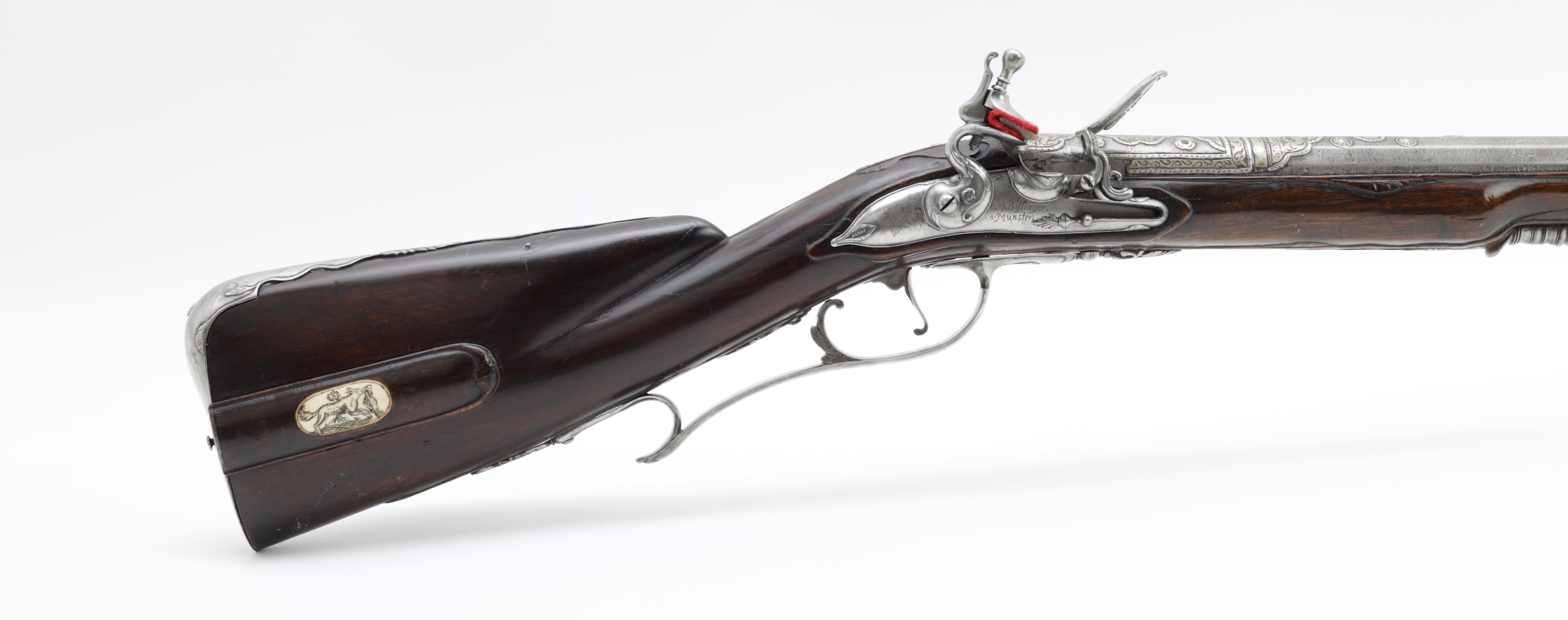



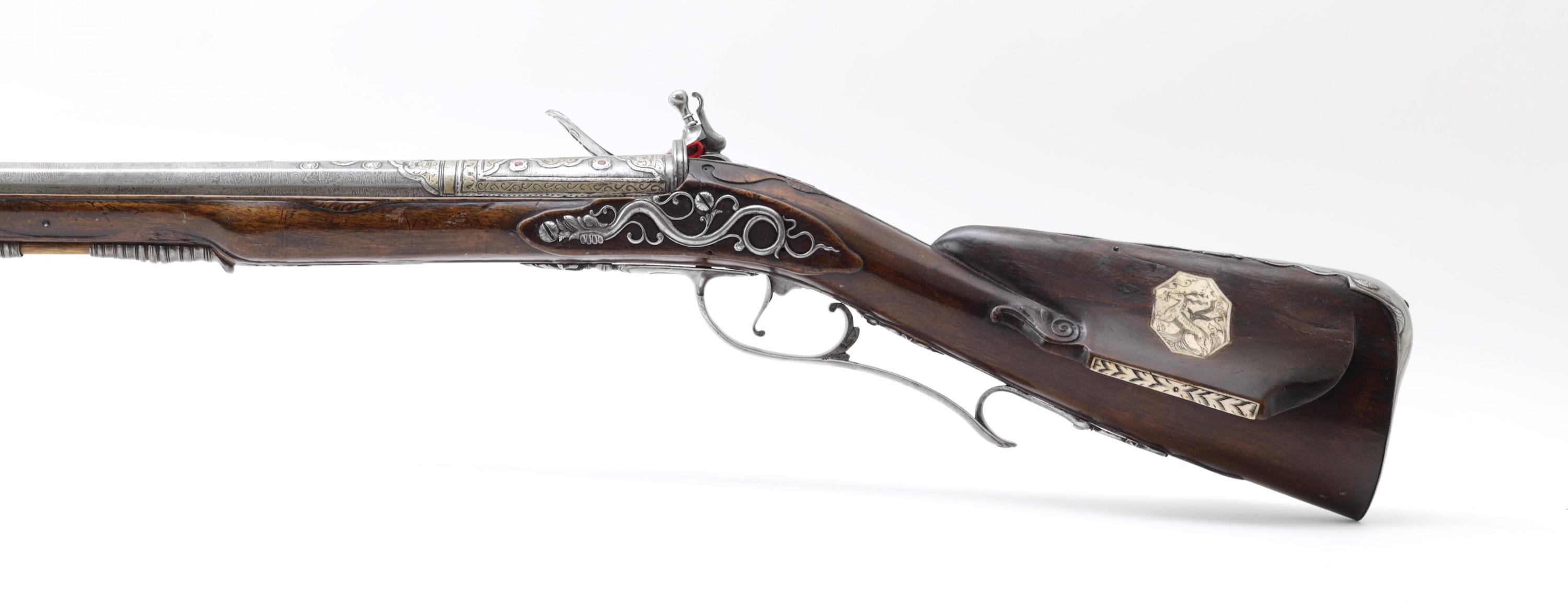


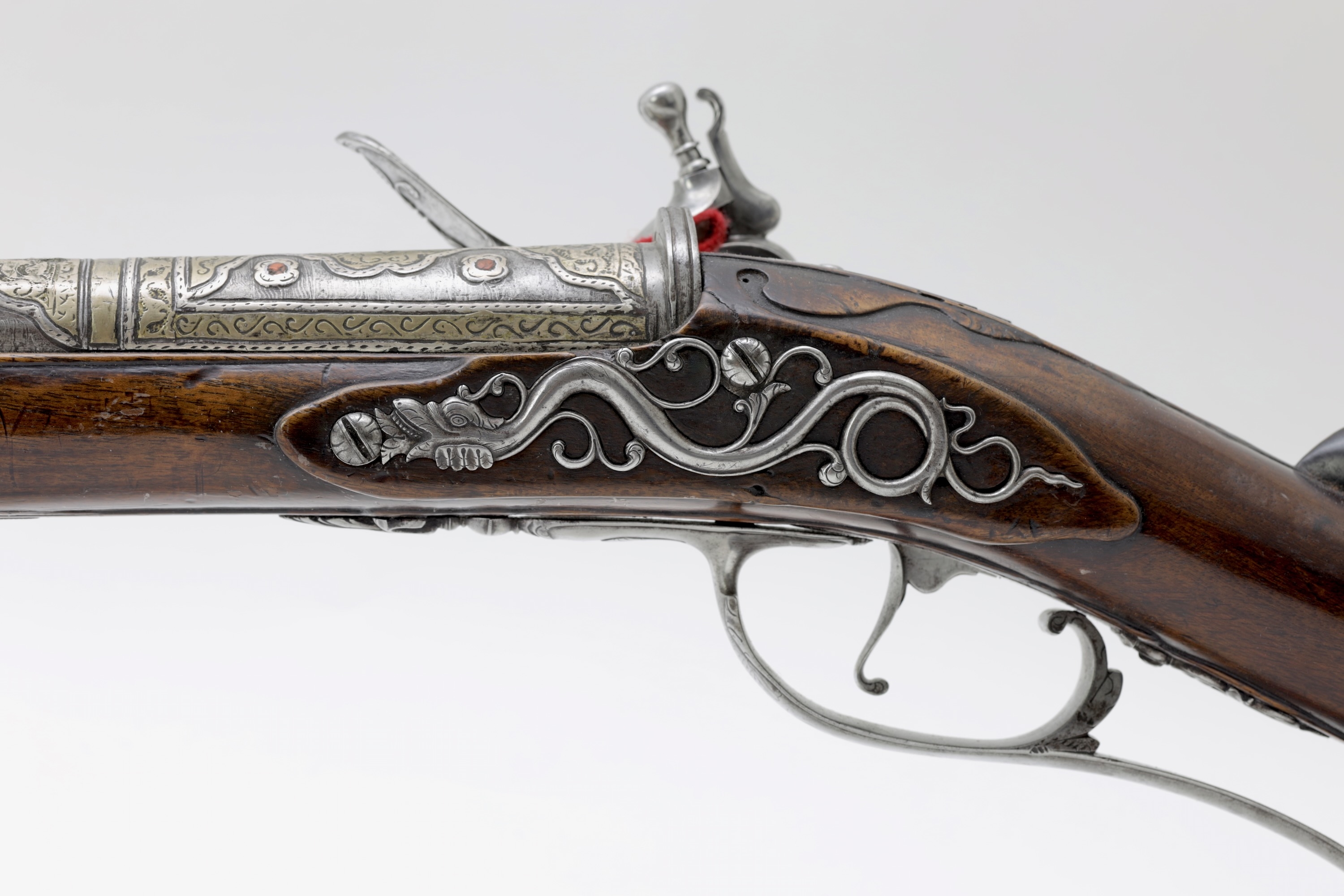



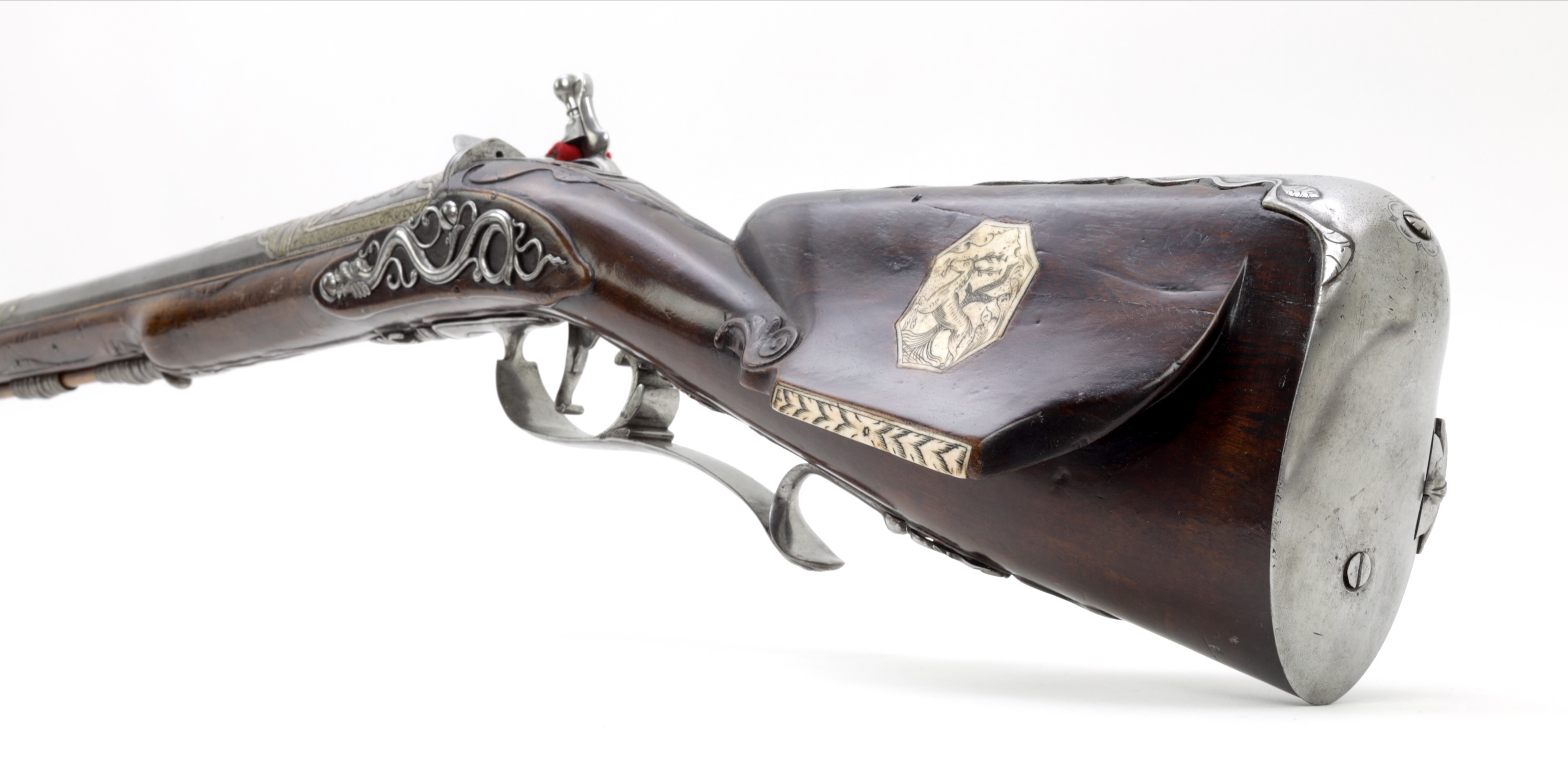
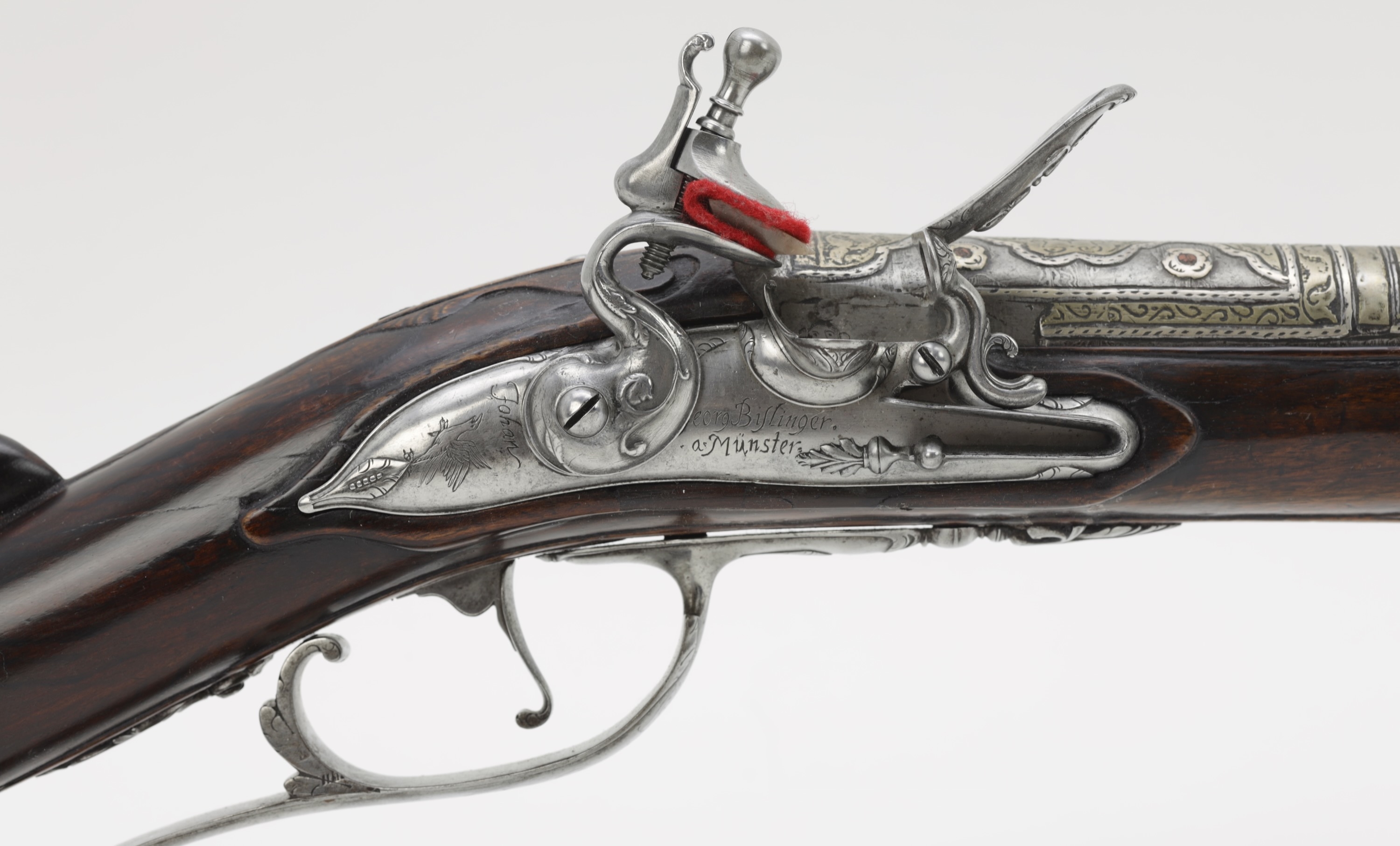



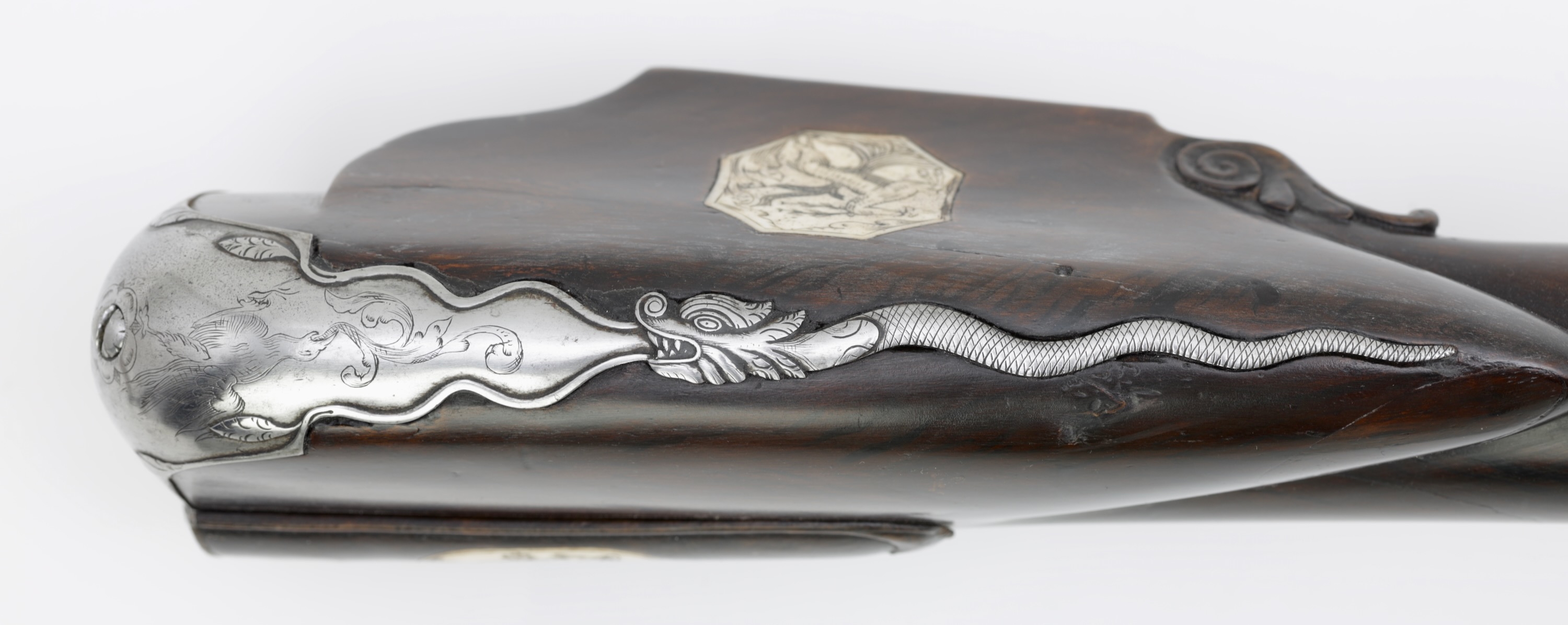
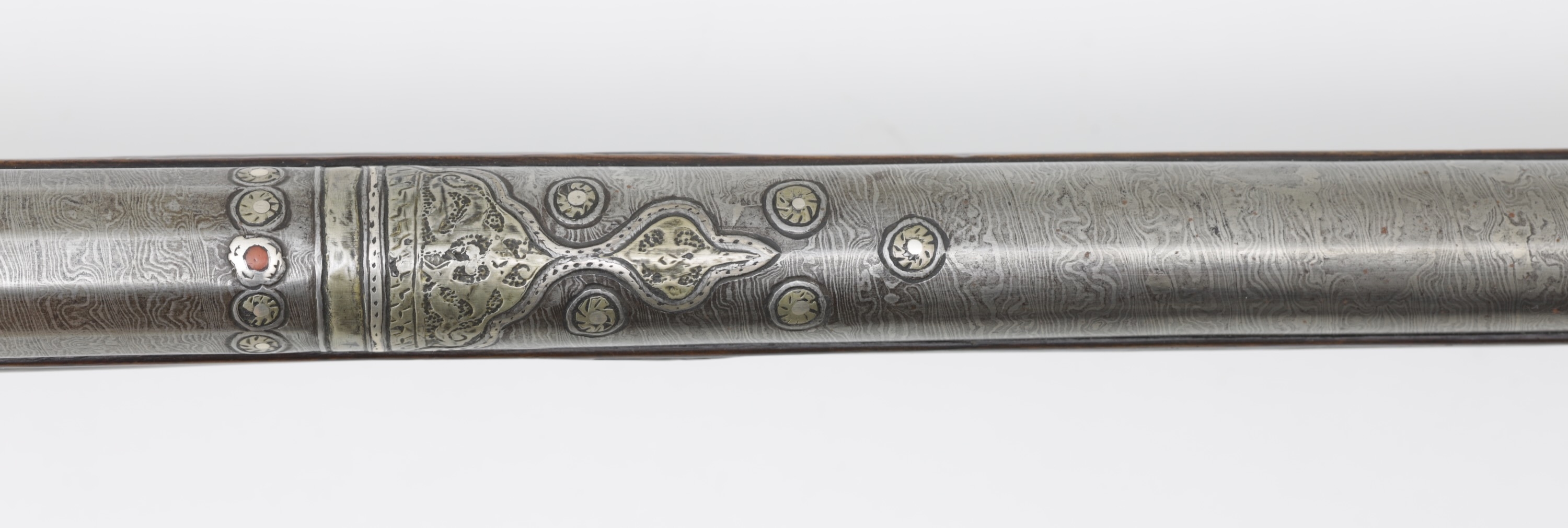





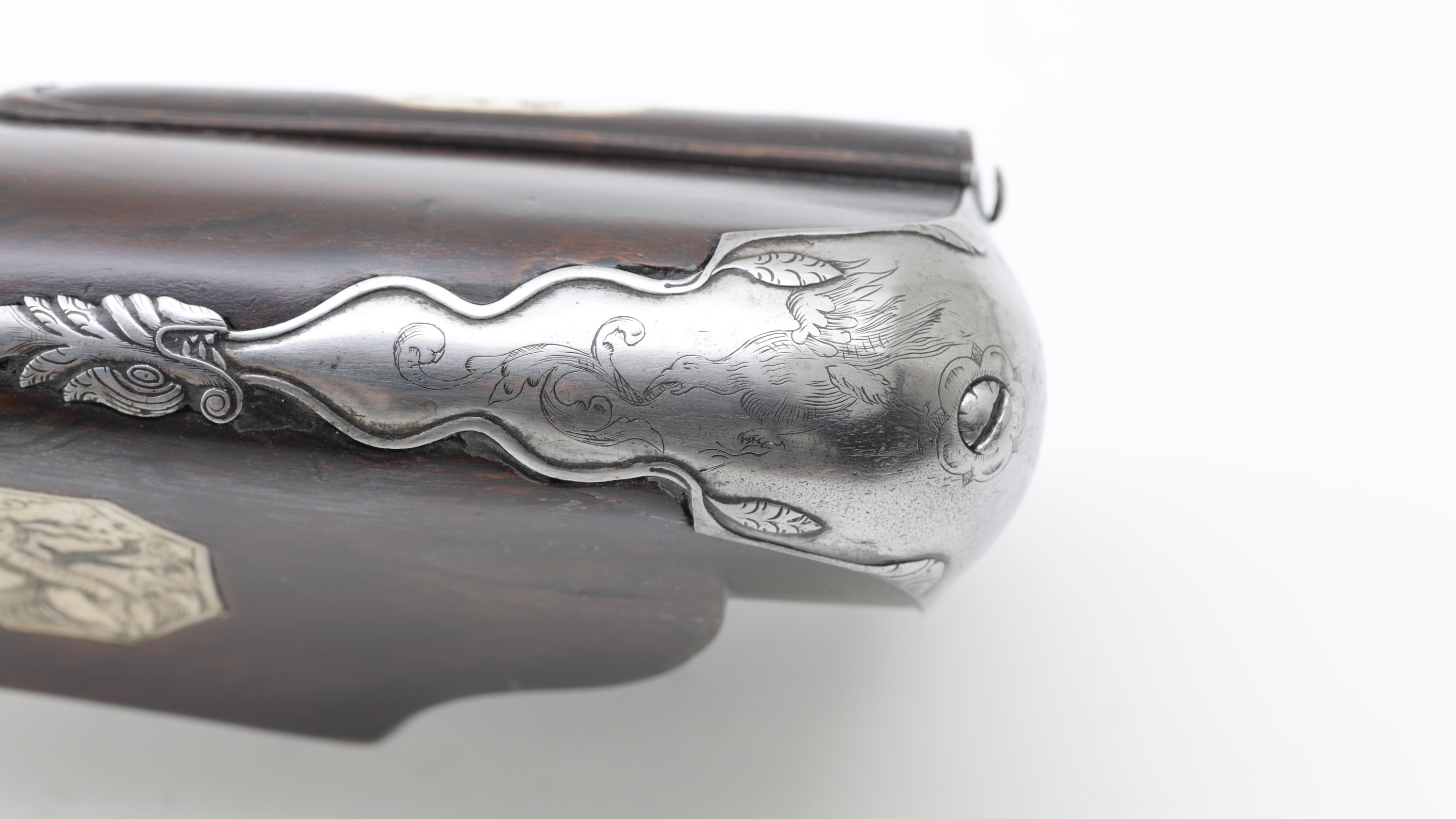
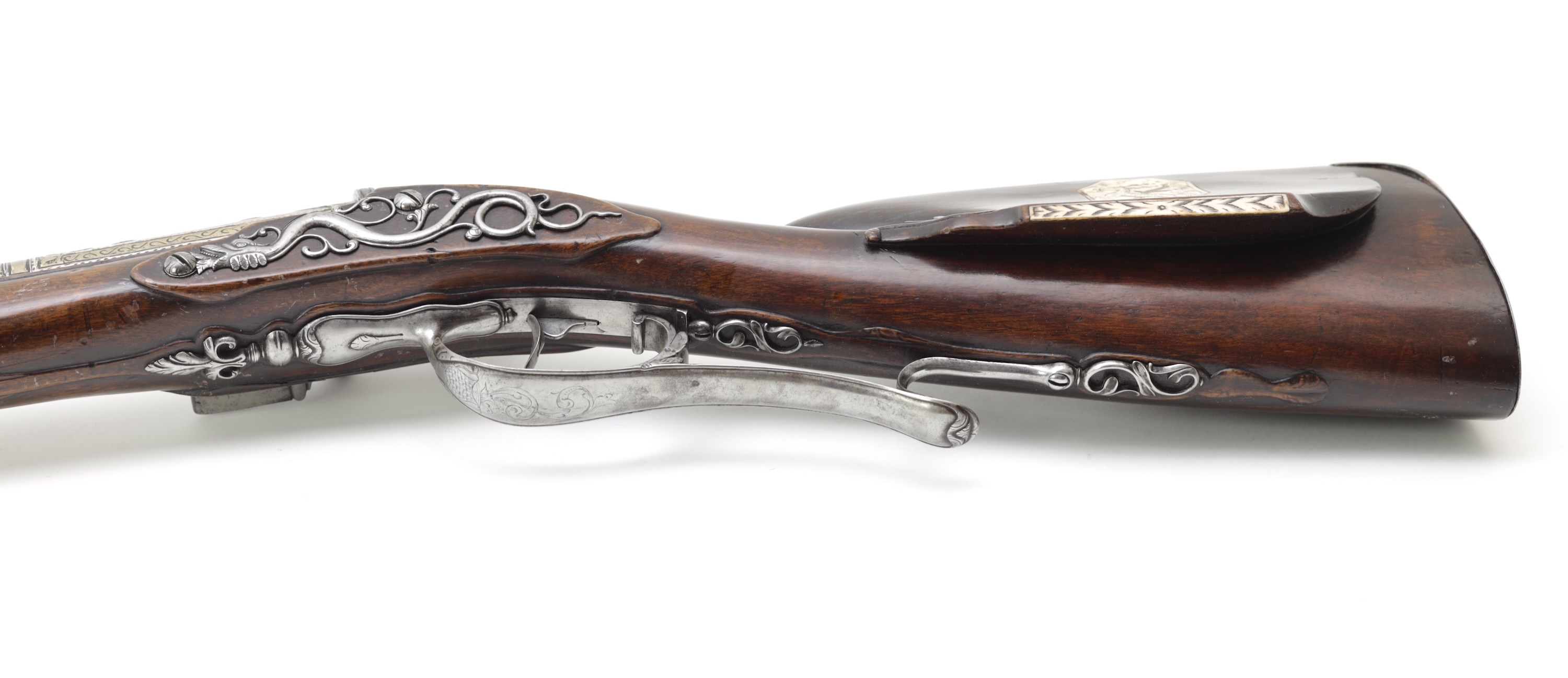
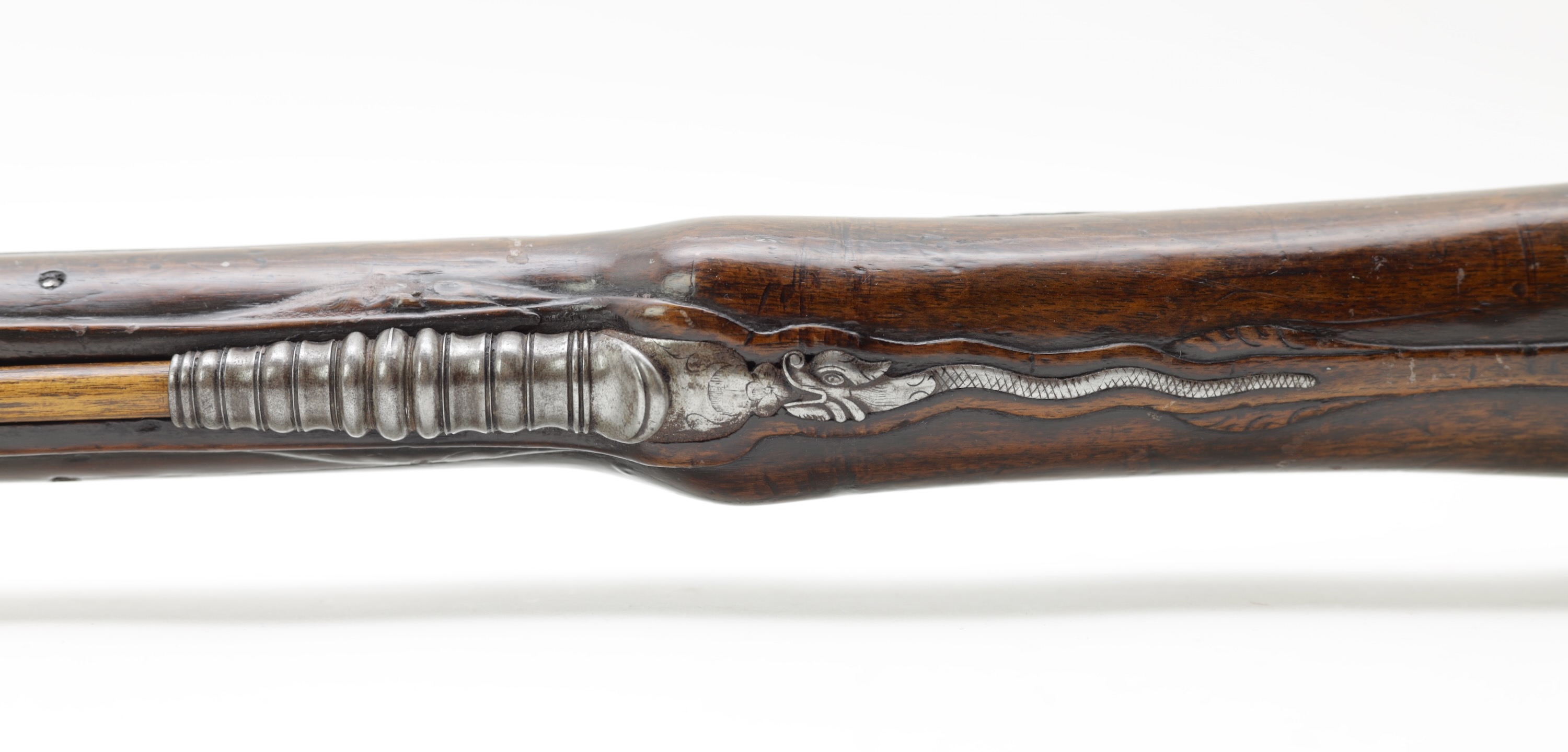
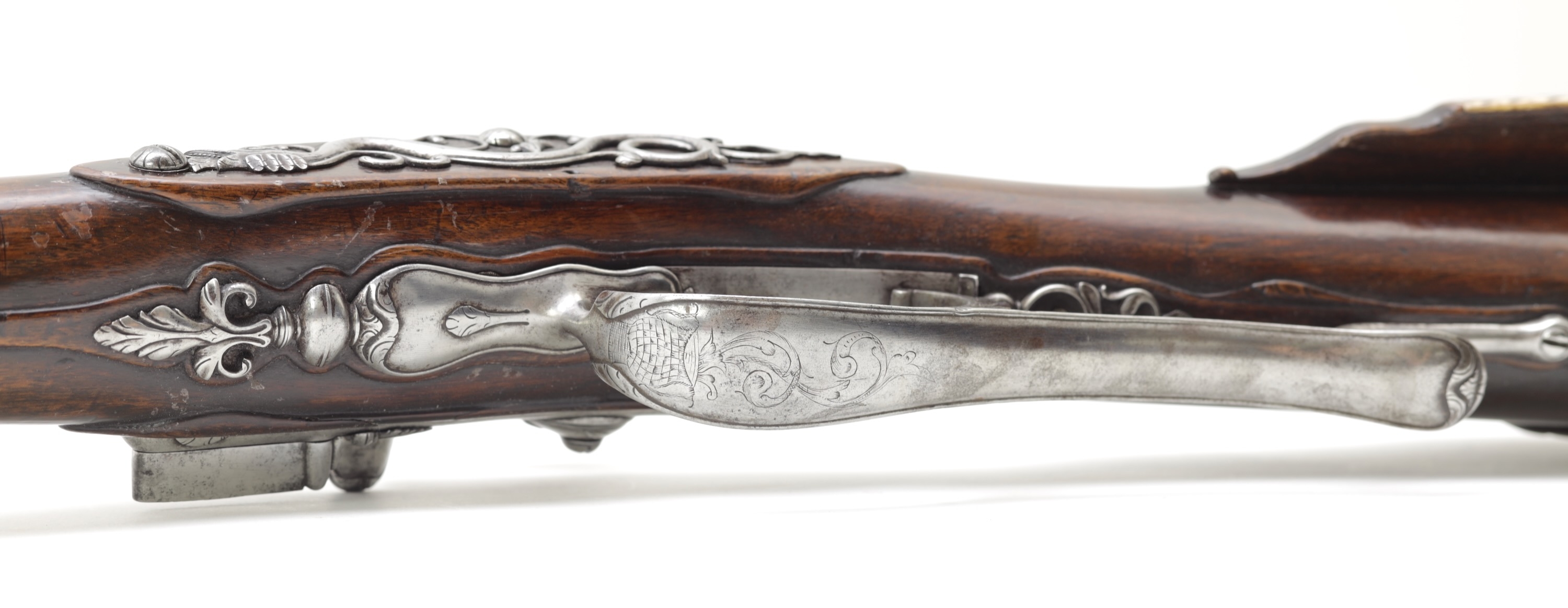


The only set of its type known to me in both private and museum collections.
With markings attributing it to the Tongzhou incident and a Japanese surrender tag.
Found in excavated condition, published with results of c-14 and XRF analysis.
A standard pattern Qing military saber, but with the rare addition of a label in Manchu.

